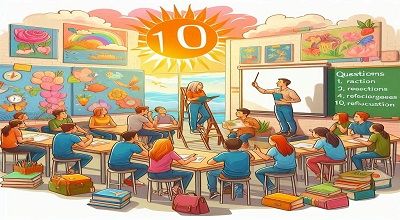Reflect Critically On Your Own Teaching
Reflect critically on your own teaching, which is an essential aspect of professional development. Here are 10 questions that can guide your reflection process:
What are my overarching teaching goals?
Consider the broader educational objectives you aim to achieve with your students. Are you focused on fostering critical thinking, promoting collaboration, or developing specific skills?
How well did I engage students in the learning process?
Reflect on the level of student involvement in class. Did you create an environment that encouraged active participation, discussions, and meaningful interactions?
Did I effectively communicate learning objectives?
Assess how clearly you conveyed the learning outcomes to your students. Clarity in communication helps students understand the purpose of the lesson and their expectations.
How did I address different learning styles and abilities?
Reflect on the strategies you employed to accommodate diverse learning needs in your classroom. Did you provide varied activities and assessments to cater to different learning styles?
What evidence do I have of student understanding and progress?
Consider the assessment methods you used and the feedback you provided. Did you collect enough evidence to gauge students’ comprehension and track their progress over time?
How did I manage classroom dynamics and behavior?
Reflect on your classroom management strategies. Were they effective in creating a positive and inclusive learning environment? How did you address any disruptive behavior?
In what ways did I incorporate technology into my teaching?
Evaluate the integration of technology tools into your teaching methods. Did they enhance the learning experience, foster engagement, or provide additional resources?
How well did I adapt to unexpected challenges or changes?
Reflect on instances where you faced unexpected challenges, disruptions, or changes in your lesson plan. How well did you adapt and maintain a positive and productive learning atmosphere?
Did I encourage a growth mindset and resilience in my students?
Consider how you fostered a growth mindset and resilience among your students. Did you emphasize the value of learning from mistakes and overcoming challenges?
What feedback did I receive, and how did I respond to it?
Reflect Critically On Your Own Teaching: Reflect on feedback from students, colleagues, and any other sources. How did you respond to constructive criticism, and what adjustments did you make based on the feedback?
Finally, reflective practice is an ongoing process, and regularly asking these questions can contribute to continuous improvement in your teaching methods.
